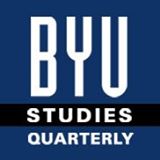BYU Studies Quarterly

Article Title
The Priestly Tithe in the First Century A.D.
Keywords
Mormon studies, Masada, tithing, offering
Abstract
Among the artifacts uncovered during the archaeological excavation at Masada was a terra-cotta pot with these words written on it: macaser kôhēn, "priestly tithe." It is reminiscent of a Herodian-period stone vessel fragment unearthed near the temple mount in Jerusalem, inscribed with the word qorban, "sacrifice." The Herodian vessel fragment also depicts two birds, perhaps indicating that it was used to present doves or pigeons in sacrifice at the temple as specified in Leviticus 12:8. Mishnah Macaser Sheni 4.10-11 mentions vessels inscribed with qorban or its abbreviation, q, and notes that among the other possible abbreviations on such sacred vessels in m for macaser, "tithe"; d for demac, "mixture"; and t for tərûmāh, the biblical "heave offering" due to the priests. Several vessels marked with a t were also found at Masada. The law of Moses sometimes mentions tithes in connection with heave offerings (Num. 18:24-28; Deut. 12:6, 11, 17). The tithing status of mixtures was uncertain. Because of this uncertainty, only priests were allowed to eat food designated as demac, so it was treated as tithed.
Recommended Citation
Tvedtnes, John A.
(1996)
"The Priestly Tithe in the First Century A.D.,"
BYU Studies Quarterly: Vol. 36:
Iss.
3, Article 18.
Available at:
https://scholarsarchive.byu.edu/byusq/vol36/iss3/18
